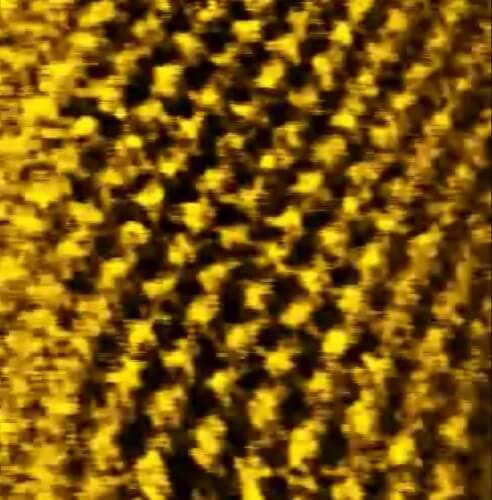The ability to directly observe chemical processes occurring within new and unusual materials is the dream of every scientist. This dream became a reality thanks to new microscopic methods: researchers were able, for the first time ever, to obtain images and video showing the connection of molecules inside an ionic liquid to the electrode immersed in it.

[Translation by Dr. Nachmani Moshe]
The ability to directly observe chemical processes occurring within new and unusual materials is the dream of every scientist. This dream became a reality thanks to new microscopic methods: researchers were able, for the first time ever, to obtain images and video showing the connection of molecules inside an ionic liquid to the electrode immersed in it.
The images obtained from the nanometer world provide detailed information about how chemical components reorganize in response to an electric current applied in their environment. New findings based on the new information could lead to the development of improved batteries as well as the development of more energy efficient coating technologies or technologies in the field of solar engineering.
liquid ions (Wikipedia) They are melts of organic salts that can be in a liquid state of aggregation at room temperature, even though they do not contain water. It is precisely this virtue that makes them such interesting materials for countless experiments and industrial processes. This, given the work that water breaks down electrolytically in contact with electrodes, even at low voltage, a phenomenon that inhibits and even prevents other electrochemical reactions, some of which are very important. In addition, the water molecules surround the ions and impair their ability to react properly. In ionic liquids, which consist only of ions, completely new reactions are possible.
In recent years, ionic liquids have been a popular field of research that is growing a whole spectrum of new compounds. Their technological applications are numerous: as electrolytes in batteries, fuel cells or dye-based solar cells and as a galvanic liquid used in coating applications, for example of aluminum or semiconductor materials. The fact that they are active at room temperature makes them easier to handle and those that lead to energy and cost savings.
Despite all these advantages and virtues, today almost no data is available regarding how the electrochemical reactions occur in ionic liquids at the molecular level or how the molecules organize themselves on the electrode. Although such data for aqueous liquids have been obtained for decades thanks to modern microscopic methods, similar studies in ionic liquids have largely failed: "The molecules, in general, simply move too fast for the existing instruments," says Professor Olaf Magnussen from the University of Kiel in Germany. Thanks to a self-built scanning tunneling microscope, his research team was able to track these molecules, and even photograph them.
The researchers were able to reveal how the molecules in the liquid, which are less than one nanometer in size, react following the transfer of an electric current through a gold electrode. If the surface is not charged, the molecules exhibit behavior typical of liquids: they are disordered and highly mobile. As the current increases, the molecules "lay down" on the surface of the electrode and form rows, and in the final stage they reorganize and stand up. During this time they also become slower and slower. "The images we received are unique and help us develop theories that better explain the processes of the ionic liquids that occur near the electrode," explains one of the researchers. "Such information is important not only for basic research, but also for practical applications." The findings of the study may lead to a better understanding of ionic liquids and allow them to be optimized for more environmentally friendly production processes.
The research video
Video: Microscope images and video of a negatively charged gold electrode in an ionic liquid.
